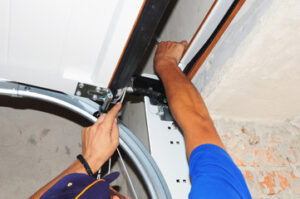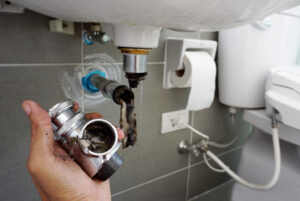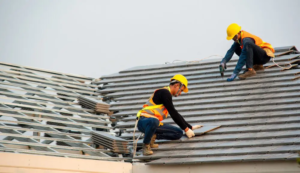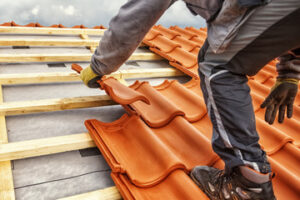Garage doors are used frequently and can sustain some damage over time. While minor issues like rust or chipped paint may be a cosmetic concern, it’s important to address any damage that impacts the function of your door.

There are some tasks that can be performed by homeowners, such as lubricating tracks and rollers, but other repairs require professional attention for safety and accuracy. Here are some common Garage Door Repair Yukon tasks that are best left to the pros:
Weather stripping is a long strip of material that seals gaps around doors and windows to keep out water, extreme temperatures, debris, pests, and more. It is important to inspect your garage door weather stripping at least one to two times per year for signs that it needs to be replaced. A worn and damaged seal can allow cold air to enter your home and warm air to escape, resulting in higher energy bills.
Look for areas where the seal is cracked, flaking, or missing pieces. Also, feel for a draft around the edges of your garage door when you are closing it to see if you can sense air moving in and out.
If you notice that your weather stripping is in need of replacement, removing the old seals and installing new ones is a simple project that most homeowners can do themselves. However, it is best to have this done professionally by a company that offers garage door repair services. This will ensure that the weather stripping is properly installed and will last longer.
Depending on the type of garage door you have, different types of weather stripping are available to meet your specific needs. Some of the most popular options include:
Foam weather stripping: This type of seal is inexpensive and durable, making it a great choice for garage doors that undergo frequent movement. It’s easy to install, but may not offer as good a seal as other options.
Rubber weather stripping: Typically installed within a retainer, this type of seal is effective at blocking out extreme temperatures and keeping dirt, snow, and debris out. It is also easy to install and requires minimal maintenance.
Brush weather stripping: This type of seal is effective at safeguarding the sides of your garage door against wind, moisture, and debris. It is also simple to install and can be trimmed to size.
Once you have removed the existing weather stripping, clean the surfaces and carefully measure the length of your new strips before cutting. If you have a sectional garage door, make sure that the new strips are placed so that they overlap with the top and bottom sections for a tight seal.
Damaged Panels
As with weather stripping, garage door panels often experience damage and wear as a result of everyday use. Minor dents or bends are relatively harmless and may not require immediate attention, but cracks or other significant damage should be addressed as soon as possible to avoid the need for panel replacement.
Depending on the extent of the damage, it is possible to repair or replace garage doors panels on your own. For minor dents or bends, a rubber mallet or block of wood can help to gently nudge the metal back into place without causing further damage. If the problem is more significant and involves a crack or major bend, it is often best to have a professional take a look at the panel to assess the situation and determine the most appropriate solution.
Accidental collisions with automobiles, misjudged backing maneuvers and sports balls are some of the most common causes of impact damage to garage doors, but the elements can also cause issues such as rusting or structural deformities. In addition, repeated opening and closing of the garage door can cause the panels to sag over time.
Replacing a damaged panel on your own is relatively easy, though it can be tricky to find one that matches the existing style of the garage door. A garage door technician can help you to select a new panel that fits the size of your space and provides the functionality you desire. There are many choices when it comes to panel material, including steel and aluminum, as well as more traditional wood.
In addition to replacing damaged panels, it is important to check the condition of the tracks and rollers on a regular basis. Track misalignment can cause the garage door to move unevenly, which is a safety hazard and can also cause problems with the operation of the opener and cable system. Loose screws or bolts can be easily tightened to fix the problem. Finally, if you notice any cracks or other signs of deterioration, it is important to have the tracks and rollers repaired as soon as possible to avoid further problems.
Broken Rollers
Your garage door relies on rollers to move up and down the tracks smoothly. They may become worn out or damaged over time, and this can lead to a number of issues with the entire system. A broken garage door can also be a safety hazard for you and your family. It’s important to regularly inspect your garage door and to address any problems promptly.
You can find signs of a problem with your rollers by paying attention to any strange noises the garage door makes while it’s operating. Then, you can take steps to fix it before the issue gets worse.
A few common issues that can affect the rollers on your garage door include:
Misaligned Tracks
If your garage door isn’t properly aligned with the track, it will create excessive wear and tear on both the track and the rollers. This can lead to more expensive repairs down the road, so it’s essential to regularly check your garage door for any signs of misalignment.
Rollers That Need to Be Replaced
While it’s possible to adjust your garage door rollers, it’s usually a good idea to replace them altogether when they start to show excessive wear and tear. Replacing the rollers will prevent them from becoming damaged or creating additional stress on other parts of the system, such as the cables or hinges.
Before replacing the rollers on your garage door, it’s important to ensure that the opener is turned off so nobody in the household accidentally activates it while you’re working on it. It’s also a good idea to have someone else help you, as the garage door can weigh hundreds of pounds and could fall on you if it falls while you’re working on it.
Once you’ve made sure the garage door is locked in the open position, use snap-locking pliers to bend one side of the track near the seam forward slightly. This will make it easier to remove the old roller and then pop in the new one. Remember to carefully place the new roller and to carefully re-attach the hinges. You’ll also want to remember how many 1/4 turns you loosen the torsion spring when adjusting it back to its original tension once you’re done replacing your garage door rollers.
Broken Cables
A broken cable is a common garage door problem. Without a cable, the springs will almost certainly break and can cause serious damage to vehicles or people parked in the garage.
Both extension and torsion springs use cables. The cables are heavy-duty twisted wires and they typically operate for years without incident, but problems such as faulty bearings in a pulley, excessive moisture near the bottom of the garage door or poor track alignment may accelerate wear, rust or corrosion. With routine visual inspections, you can spot potential trouble and possibly avoid a cable break.
If you notice a loose, frayed or disconnected cable, it’s important to replace it promptly. While you can replace a cable yourself, it’s recommended that you contact a professional service to help ensure the job is done correctly and safely.
Before you begin, disconnect the power and secure the door in an open position with a pair of locking pliers or C-clamps. Using a ladder, locate the cable drum in the middle of the bottom roller and identify which side of the garage door the cable runs on. The end of the cable should rest in a notch on the drum and the other end will be looped around a pin located on the bottom of the garage door, along the outer edge.
Carefully unwind and remove the old cable. If you’re replacing the cable, make sure the new one matches the original exactly in terms of diameter and length. Alternatively, you can splice the ends of the cable together to create a single long piece. Be careful though because the loose end of the cable can easily grab onto anything within reach and pinch your fingers before your synapses have a chance to send the message.
After splicing or connecting the new cable, loosen the set screws that secure it to the bottom bracket and tighten them. If you’re repairing the existing cable, start by locating the end that’s missing the loop and place it in the notch on the drum. Wind the cable back on the drum, using the grooves in the drum to guide the cable. Then, connect the other end to the bottom bracket and test the operation of the door.







